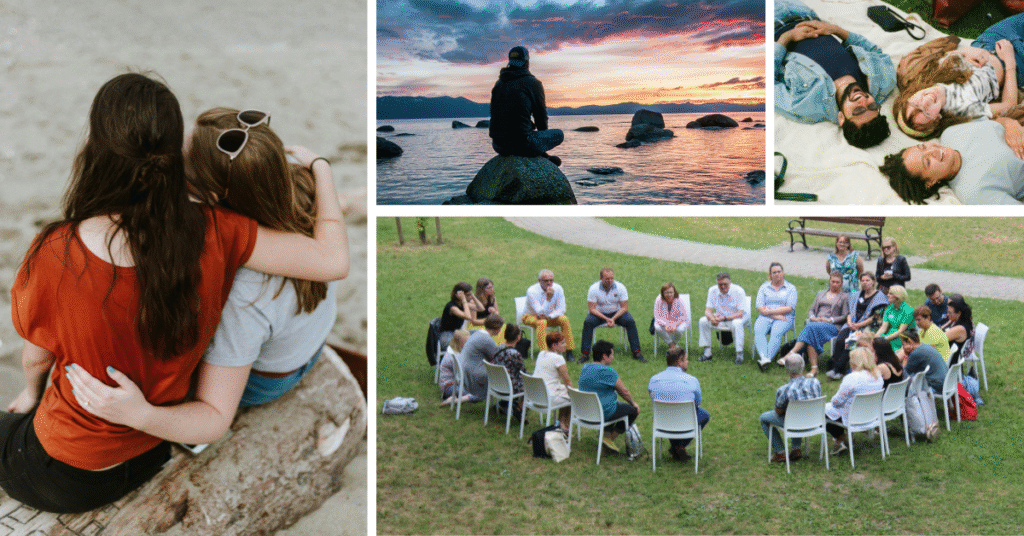Meeting the Demands of Life with Self-Regulation, Solo-Regulation, Solitary Regulation, and Co-Regulation
The other day I was questioned about “solo regulation”. What is solo regulation really? Do we mean “solitary”? This got me thinking about different flavors of self-regulation. We all have our favorite “go-to” ways of regulating ourselves. What are yours?
Solitary Self-Regulation: Solitary, meaning I am actually on my own, alone, and not in any company at all. Some of us seek out and need solitude to settle down or to attune to our current needs. Some of us will only cry once we are alone.
We may feel stressed and dysregulated UNTIL we are alone and feel we can stop defending against the energetic presence of anyone else. This can be true when those around us are not available to attune, when they are of some threat to us, or when we only feel safe enough to re-regulate when we are alone. This solitary self-regulation can often be your best choice when you do not want to resonate with the upset, meanness, anger, or other distressed states of those around you.
Solo Self-regulation means regulating myself without leaning on another person, without intentionally attuning to anyone else. “Solo” means I’m in the regulation game on my own this time, not as a duet or with a group.
I may use any number of tools and practices to self-regulate – breathing, a shower, mindfulness, exercise, time in nature, rest, listening to or playing music … There is a huge range of what might help a person self-regulate. You probably have it down. Think of what you do when you need to rev up, or calm down, when you want to feel better, or feel more, or get ready to socialize.
Many of us rely only on ourselves for regulation. We may feel unsafe expecting others to help us regulate, we may be ashamed of our needs, and we may not know if our relationships can sustain our need for connection in intense states.. We may not have sturdy nervous system wiring for co-regulation due to any number of habits, traumas, or social inhibitions. (That can change with co-regulation practice.)
Self-regulation is an essential skill for all adults. There will certainly be times when those around us are not available to help, however much they love us, and there are times when we are alone and need to regulate.
Note: Solo self-regulation CAN happen around other people. You might be in a busy park in the summer. People are around, but you are not actively connecting with any of them. You might self-regulate by mindfully noticing your body, your senses, the sights and sounds of the park on a beautiful day. Or say you are at home with family, someone is doing their homework and you are making dinner. Perhaps you energize yourself for the task with some upbeat music on your headphones. Or you might be at home with family, and someone is yelling at you. Perhaps you breathe slowly and wiggle your toes so you can respond calmly.
Co-regulation is also called mutual regulation. It means regulating yourself with another person, intentionally leaning into the connection and collaborating for the benefit of both. Together, you can hold steady or shift states to be better adjusted for the task or situation at hand. Co-regulation happens when we resonate or attune with another mammalian regulation system. To be co-regulation, it must be good for both people!
One-way regulation: The prime scenario here is caregiving, especially parenting. It means one person offers regulation to another without receiving it in return. Often one person is available to offer attunement and the other is not – due to distress or trauma triggers, or power imbalances, including age and experience. Sometimes the lower-status person in a relationship knows that they must regulate the higher-status partner, or they will pay a price. This can happen in both romantic and business relationships.
In therapy, the therapist may offer a regulating presence to the client without receiving regulation themselves. There is nothing at all wrong with one-way regulation. It is necessary and invaluable. However, when the burden of regulation falls too much on a person, they tend to burn out. The relationship can suffer. When one adult regulates another often, in a supposedly “peer” dynamic, like a romantic partnership, the imbalance can sour the relationship.
For parents, teachers, and therapists who offer one-way regulation to children and clients, co-regulation and self-regulation are essential for thriving and for sustaining the regulatory roles.
What are your habits around regulation and how are they working for you?
Do you want to build your regulation options and have more choice at your fingertips?
What do you need when you are feeling off or unprepared for what the world is asking of you?
Image Credits:
Priscilla Du Preez, Simi Iluyomade, Dorota Trzaska, and Joshua Earle – Thank you all!
